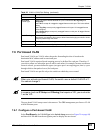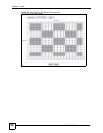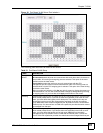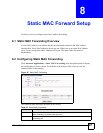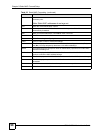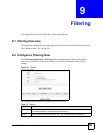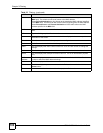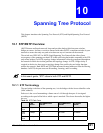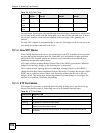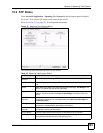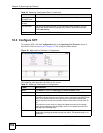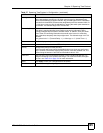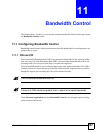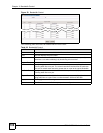
VES-1616F-3x Series User’s Guide
101
CHAPTER 10
Spanning Tree Protocol
This chapter introduces the Spanning Tree Protocol (STP) and Rapid Spanning Tree Protocol
(RSTP).
10.1 STP/RSTP Overview
(R)STP detects and breaks network loops and provides backup links between switches,
bridges or routers. It allows a switch to interact with other (R)STP -compliant switches in your
network to ensure that only one path exists between any two stations on the network.
The switch uses IEEE 802.1w RSTP (Rapid Spanning Tree Protocol) that allows faster
convergence of the spanning tree than STP (while also being backwards compatible with STP-
only aware bridges). In RSTP, topology change information is directly propagated throughout
the network from the device that generates the topology change. In STP, a longer delay is
required as the device that causes a topology change first notifies the root bridge that then
notifies the network. Both RSTP and STP flush unwanted learned addresses from the filtering
database. In RSTP, the port states are Discarding, Learning, and Forwarding.
" In this user’s guide, “STP” refers to both STP and RSTP.
10.1.1 STP Terminology
The root bridge is the base of the spanning tree; it is the bridge with the lowest identifier value
(MAC address).
Path cost is the cost of transmitting a frame onto a LAN through that port. It is assigned
according to the speed of the link to which a port is attached. The slower the media, the higher
the cost.
Table 24 STP Path Costs
LINK
SPEED
RECOMMENDED
VALUE
RECOMMENDED
RANGE
ALLOWED
RANGE
Path
Cost
4Mbps 250 100 to 1000 1 to 65535
Path
Cost
10Mbps 100 50 to 600 1 to 65535
Path
Cost
16Mbps 62 40 to 400 1 to 65535



